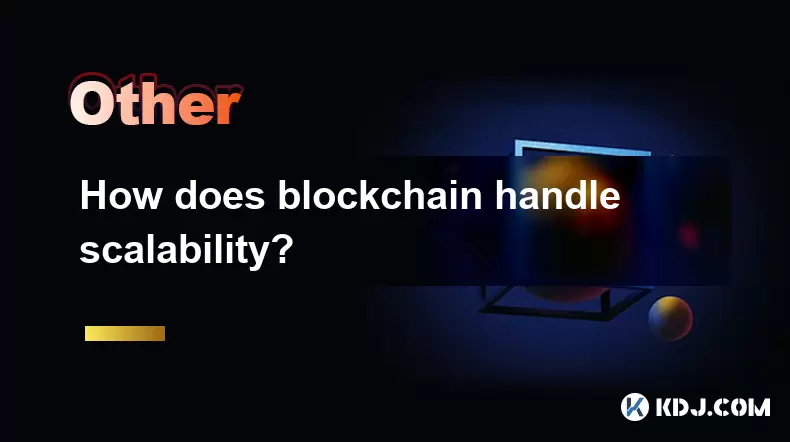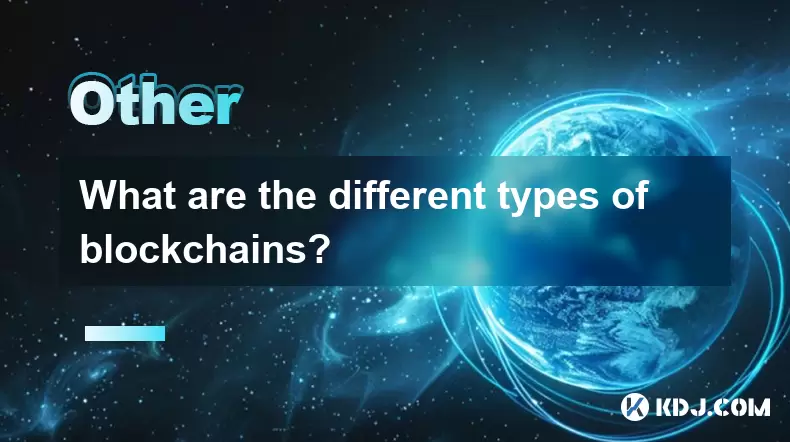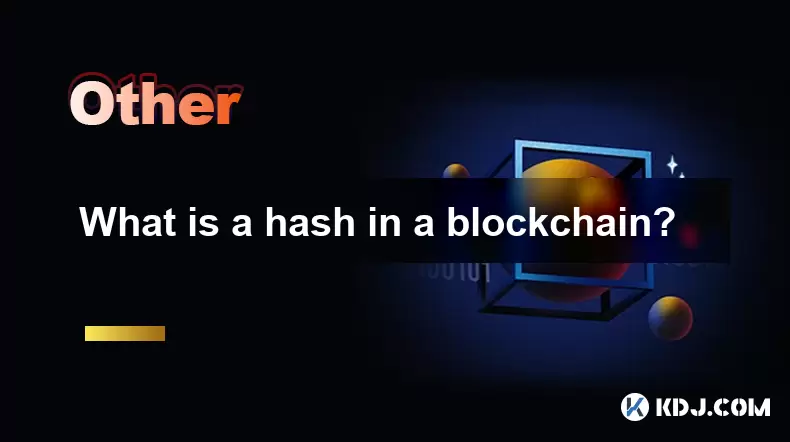-
 Bitcoin
Bitcoin $112700
-0.57% -
 Ethereum
Ethereum $3409
-3.35% -
 XRP
XRP $2.800
-6.95% -
 Tether USDt
Tether USDt $0.9998
0.05% -
 BNB
BNB $741.2
-2.50% -
 Solana
Solana $158.2
-4.71% -
 USDC
USDC $0.9999
0.02% -
 TRON
TRON $0.3220
-1.23% -
 Dogecoin
Dogecoin $0.1937
-6.71% -
 Cardano
Cardano $0.6987
-4.25% -
 Hyperliquid
Hyperliquid $36.60
-1.92% -
 Sui
Sui $3.336
-6.21% -
 Stellar
Stellar $0.3689
-6.39% -
 Chainlink
Chainlink $15.71
-3.85% -
 Bitcoin Cash
Bitcoin Cash $527.4
-2.19% -
 Hedera
Hedera $0.2295
-7.74% -
 Avalanche
Avalanche $21.05
-3.87% -
 Ethena USDe
Ethena USDe $1.001
0.02% -
 Toncoin
Toncoin $3.539
-1.75% -
 UNUS SED LEO
UNUS SED LEO $8.964
0.14% -
 Litecoin
Litecoin $105.8
-0.13% -
 Shiba Inu
Shiba Inu $0.00001184
-3.50% -
 Polkadot
Polkadot $3.501
-3.07% -
 Uniswap
Uniswap $8.831
-2.88% -
 Dai
Dai $1.000
0.03% -
 Monero
Monero $290.4
-3.99% -
 Bitget Token
Bitget Token $4.242
-1.47% -
 Pepe
Pepe $0.00001009
-5.08% -
 Cronos
Cronos $0.1253
-6.28% -
 Aave
Aave $249.9
-3.27%
How are the anonymity and privacy of blockchain reflected?
Blockchain offers pseudonymity, not anonymity; privacy coins like Monero use advanced techniques to enhance transaction privacy, but no system is completely untraceable.
Mar 29, 2025 at 04:28 am

Blockchain's Double-Edged Sword: Anonymity vs. Privacy
Blockchain technology, at its core, is a public ledger. This inherent transparency often leads to confusion regarding its anonymity and privacy features. While blockchain itself isn't inherently anonymous, the level of privacy it offers depends heavily on the specific implementation and the cryptocurrency in question. Understanding this distinction is crucial for navigating the crypto landscape.
One common misconception is that all blockchain transactions are completely anonymous. This is false. While many blockchains utilize pseudonymous addresses (long strings of alphanumeric characters), these addresses, while not directly tied to real-world identities, can still be linked to individuals through various investigative techniques. This is where the difference between anonymity and privacy becomes critical.
Anonymity refers to the inability to link a transaction or address to a specific individual. Privacy, on the other hand, refers to the ability to control who can access information about your transactions. These are distinct concepts, and many blockchain systems offer varying degrees of both.
Pseudonymity: The Foundation of Blockchain Privacy
Most cryptocurrencies operate on a system of pseudonymity. Each user is assigned a unique public key and a corresponding private key. The public key is used to receive funds, and the private key is used to authorize transactions. While the public key is visible on the blockchain, it doesn't directly reveal the user's identity. This is the basis of the privacy offered by many blockchain networks.
However, linking pseudonymous addresses to real-world identities is possible through various means. Analyzing transaction patterns, correlating addresses with known entities, and using on-chain and off-chain data analysis techniques can all compromise the privacy afforded by pseudonymity. Sophisticated techniques like chain analysis are employed by law enforcement and other organizations to trace cryptocurrency transactions.
Enhancing Privacy on the Blockchain: Privacy Coins and Techniques
Recognizing the limitations of basic blockchain pseudonymity, developers have created privacy-focused cryptocurrencies, often referred to as privacy coins. These coins employ various techniques to enhance the privacy of transactions.
- Zero-knowledge proofs: These cryptographic techniques allow users to prove the validity of a transaction without revealing any other information.
- Ring signatures: These obscure the origin of a transaction by making it appear as if it came from one of several possible addresses.
- Confidential transactions: These hide the amounts being transferred in a transaction.
- Mixing services: These services combine multiple transactions to further obfuscate the origin and destination of funds. However, it's important to note that the security and trustworthiness of these services vary widely.
The use of these privacy-enhancing techniques significantly increases the difficulty of tracing transactions back to individuals. However, no system is foolproof. Even privacy coins can be vulnerable to sophisticated analysis and attacks, particularly if users make mistakes or reveal identifying information through their interactions with exchanges or other services.
The Role of Mixing Services and Tumblers
Mixing services, sometimes called tumblers, are designed to break the link between the sender and receiver of cryptocurrency. They work by combining multiple transactions from different users, making it difficult to trace the flow of funds.
However, using mixing services carries risks. Some services may be operated by malicious actors who could steal or monitor user funds. Furthermore, the use of mixing services can raise red flags for regulatory bodies and exchanges, potentially leading to account freezes or legal issues. Therefore, users should exercise caution and thoroughly research any mixing service before using it.
Exchanges and KYC/AML Regulations
Centralized cryptocurrency exchanges play a significant role in compromising the anonymity of blockchain transactions. Most reputable exchanges require users to undergo Know Your Customer (KYC) and Anti-Money Laundering (AML) procedures, which involve providing personal information to verify their identity. This information is often stored and can be accessed by law enforcement agencies.
This requirement significantly reduces the anonymity of cryptocurrency transactions, as users are now directly linked to their accounts and their activity on the exchange. While KYC/AML regulations are designed to prevent illicit activities, they also undermine the privacy features of blockchain technology for legitimate users.
On-Chain vs. Off-Chain Data: A Privacy Perspective
Analyzing on-chain data (information directly visible on the blockchain) is a common method for tracing cryptocurrency transactions. However, off-chain data (information not directly on the blockchain, such as IP addresses, exchange records, and user interactions with other services) can provide crucial clues to connect pseudonymous addresses with real-world identities.
The combination of on-chain and off-chain analysis makes it increasingly difficult to maintain complete anonymity when using cryptocurrencies. This highlights the ongoing tension between the desire for privacy and the need for transparency and regulatory compliance within the cryptocurrency ecosystem.
The Future of Blockchain Privacy
The ongoing development of privacy-enhancing technologies and the increasing sophistication of analysis techniques are shaping the future of blockchain privacy. The balance between anonymity, privacy, and regulatory compliance will continue to evolve, impacting the way individuals and organizations utilize blockchain technology. The pursuit of greater privacy within the crypto space is an ongoing challenge, with developers and researchers constantly exploring new methods to enhance user protection.
Frequently Asked Questions
Q: Is Bitcoin anonymous?
A: Bitcoin is not anonymous, but pseudonymous. Transactions are linked to public addresses, not directly to individuals. However, these addresses can be linked to individuals through various investigative techniques.
Q: What are privacy coins?
A: Privacy coins are cryptocurrencies designed to enhance the privacy of transactions using techniques like zero-knowledge proofs and ring signatures. Examples include Monero and Zcash.
Q: How can my blockchain transactions be traced?
A: Transactions can be traced through analysis of on-chain data (transaction history on the blockchain) and off-chain data (information not directly on the blockchain, such as IP addresses and exchange records).
Q: Are mixing services safe?
A: The safety of mixing services varies widely. Some may be operated by malicious actors, while others may be legitimate but still carry risks due to regulatory scrutiny. Thorough research is crucial before using any mixing service.
Q: What is the difference between anonymity and privacy in blockchain?
A: Anonymity means your identity cannot be linked to your transactions. Privacy means you control who can access information about your transactions. Many blockchains offer pseudonymity, a weaker form of both.
Q: How do KYC/AML regulations affect blockchain privacy?
A: KYC/AML regulations require exchanges to collect user information, linking their identities to their cryptocurrency transactions and reducing anonymity. This is a trade-off between preventing illicit activity and protecting user privacy.
Disclaimer:info@kdj.com
The information provided is not trading advice. kdj.com does not assume any responsibility for any investments made based on the information provided in this article. Cryptocurrencies are highly volatile and it is highly recommended that you invest with caution after thorough research!
If you believe that the content used on this website infringes your copyright, please contact us immediately (info@kdj.com) and we will delete it promptly.
- Ruvi AI: The Millionaire Maker with a Price Spike on the Horizon?
- 2025-08-03 02:50:12
- DOGE, Utility Coins, and Smart Money: A New Era for Crypto Investing?
- 2025-08-03 02:50:12
- Punisher Coin: Is This Meme Coin the Crypto Investment with 100x ROI Potential?
- 2025-08-03 03:30:12
- Ruvi AI, XRP, and CoinMarketCap: Decoding the Crypto Buzz
- 2025-08-03 03:30:12
- Solana, WeWake, and Presales: What's Hot in the Crypto Space?
- 2025-08-03 03:35:25
- MoonBull, LOFI Pepe: Navigating the Meme Coin Mania and the Best Crypto Whitelist
- 2025-08-03 04:10:12
Related knowledge

What is the difference between on-chain and off-chain transactions?
Aug 02,2025 at 04:22pm
Understanding On-Chain TransactionsOn-chain transactions refer to digital asset transfers that are recorded directly on a blockchain ledger. These tra...

What is the double-spending problem and how does blockchain prevent it?
Aug 02,2025 at 01:07pm
Understanding the Double-Spending ProblemThe double-spending problem is a fundamental challenge in digital currency systems where the same digital tok...

What is the difference between a blockchain and a database?
Aug 01,2025 at 09:36pm
Understanding the Core Structure of a BlockchainA blockchain is a decentralized digital ledger that records data in a series of immutable blocks linke...

How does blockchain handle scalability?
Aug 02,2025 at 02:58pm
Understanding Blockchain Scalability ChallengesBlockchain scalability refers to a network's ability to handle an increasing volume of transactions wit...

What are the different types of blockchains?
Aug 03,2025 at 03:01am
Public Blockchains: Open and Decentralized NetworksPublic blockchains are the most widely recognized type of blockchain, characterized by their open a...

What is a hash in a blockchain?
Aug 02,2025 at 05:28am
Understanding the Concept of Hash in BlockchainA hash in the context of blockchain technology refers to a unique digital fingerprint generated by a cr...

What is the difference between on-chain and off-chain transactions?
Aug 02,2025 at 04:22pm
Understanding On-Chain TransactionsOn-chain transactions refer to digital asset transfers that are recorded directly on a blockchain ledger. These tra...

What is the double-spending problem and how does blockchain prevent it?
Aug 02,2025 at 01:07pm
Understanding the Double-Spending ProblemThe double-spending problem is a fundamental challenge in digital currency systems where the same digital tok...

What is the difference between a blockchain and a database?
Aug 01,2025 at 09:36pm
Understanding the Core Structure of a BlockchainA blockchain is a decentralized digital ledger that records data in a series of immutable blocks linke...

How does blockchain handle scalability?
Aug 02,2025 at 02:58pm
Understanding Blockchain Scalability ChallengesBlockchain scalability refers to a network's ability to handle an increasing volume of transactions wit...

What are the different types of blockchains?
Aug 03,2025 at 03:01am
Public Blockchains: Open and Decentralized NetworksPublic blockchains are the most widely recognized type of blockchain, characterized by their open a...

What is a hash in a blockchain?
Aug 02,2025 at 05:28am
Understanding the Concept of Hash in BlockchainA hash in the context of blockchain technology refers to a unique digital fingerprint generated by a cr...
See all articles

























































































